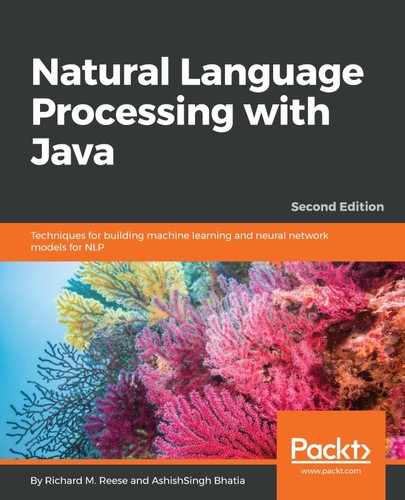A pipeline is nothing more than a sequence of operations where the output of one operation is used as the input to another operation. We have seen it used in several examples in previous chapters but they have been relatively short. In particular, we saw how the Stanford StanfordCoreNLP class, with its use of annotators objects, supports the concept of pipelines nicely. We will discuss this approach in the next section. One of the advantages of a pipeline, if structured properly, is that it allows the easy addition and removal of processing elements. For example, if one step of the pipeline converts a token to lowercase, then it is easy to simply remove this step, with the remaining elements of the pipeline left untouched. However, some pipelines are not always this flexible. One step may require a previous step in order to work properly. In a pipeline, such as the one supported by the StanfordCoreNLP class, the following set of annotators is needed to support POS processing:
props.put("annotators", "tokenize, ssplit, pos");
If we leave out the ssplit annotator, the following exception is generated:
java.lang.IllegalArgumentException: annotator "pos" requires annotator "ssplit"
Although the Stanford pipeline does not require a lot of effort to set up, other pipelines may. We will demonstrate the latter approach in the Creating a pipeline to search text section later in this chapter.
